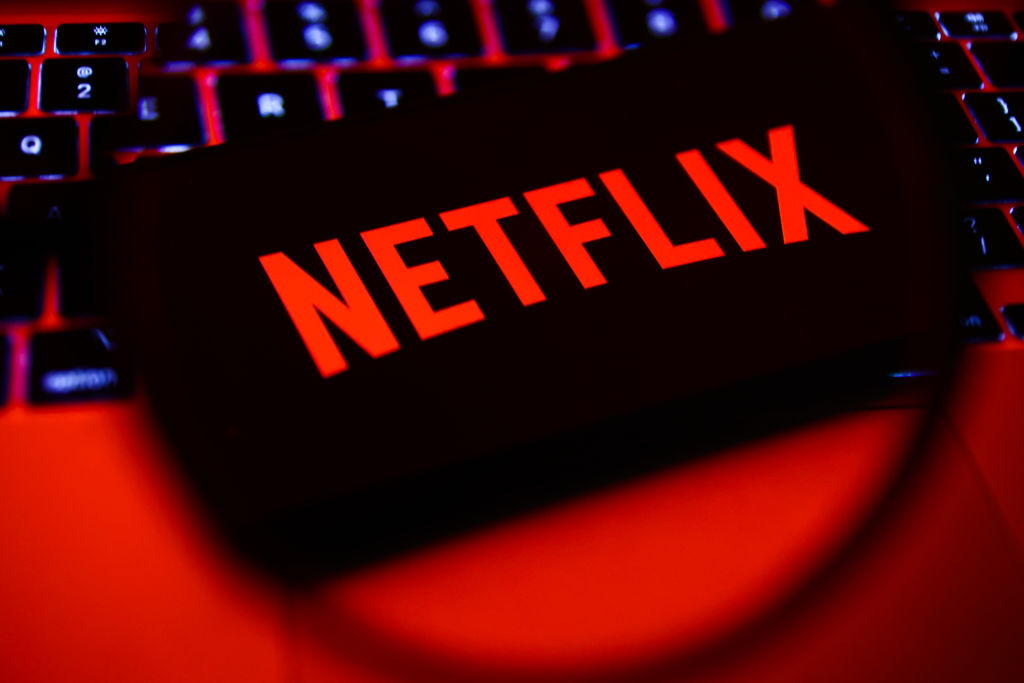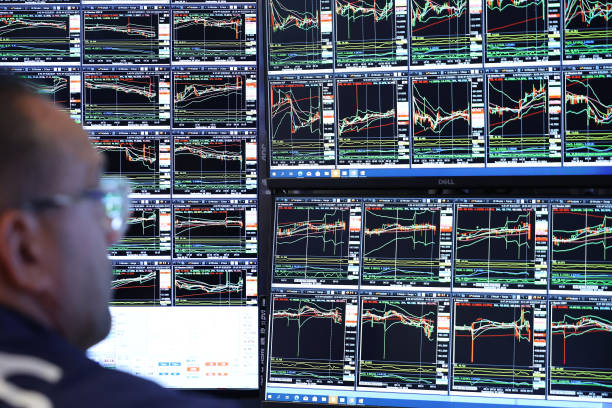Best S&P 500 Stocks of 2013
The index’s top-performing shares this year are headed by a name familiar to every fan of streaming video.

Comebacks and momentum stories dominate the list of the hottest companies in Standard & Poor’s 500-stock index this year. Meanwhile, the names that did the worst in 2013 were once-hot shares that have turned suddenly cold, either because of industry woes or corporate stumbles. It’s a familiar theme. On Wall Street, one of the best ways to be this year’s darling is to be last year’s dog, and vice versa. “The market exaggerates,” says R.J. Hottovy, an analyst with Morningstar Investments in Chicago. “In some cases, companies get oversold…and then they get overbought.”
Netflix (symbol NFLX) is a prime example. The subscription movie company saw its shares slammed in 2011, thanks to a price hike and shift in its business model that alienated a huge number of subscribers. The company’s stock, which sold for $295 in July 2011, dropped to $54 in July 2012 as Netflix pressed forward with an expensive technology upgrade that allowed subscribers to receive movies and shows via the Internet rather than through the mail. But that gamble paid off, reviving the company’s subscriber base. Wall Street is so in love with Netflix that the stock soared 298% in 2013 and now sells for about 91 times projected 2014 earnings, which is more than four times the Los Gatos, Cal., company’s projected long-term profit growth rate. (All stock returns as of December 31, 2013.)
Best Buy (BBY) has a similar story. Left for dead at the end of 2012, largely because of concerns that the chain couldn’t compete with the likes of Amazon.com (AMZN) and Costco Wholesale (COST), the Richfield, Minn., retailer brought in new management, cut costs and revived its online presence. The company is still not out of the woods, by the CEO’s own admission, but you’d never know that by the stock price. Best Buy’s shares shot up 244% in 2013 and, at $40, now sell for 14 times projected earnings for the fiscal year that ends in January 2015. While profitability is improving, “the market has probably overshot the intrinsic value,” says Hottovy. “Price competition is going to get a lot more attention in 2014 than it did this year.”

Sign up for Kiplinger’s Free E-Newsletters
Profit and prosper with the best of expert advice on investing, taxes, retirement, personal finance and more - straight to your e-mail.
Profit and prosper with the best of expert advice - straight to your e-mail.
Top 10 S&P 500 Stocks of 2013
StockPrice *
1. Netflix (NFLX)+298%2. Best Buy (BBY)+244%3. Micron Technology (MU)+243%4. Delta Air Lines (DAL)+133%5. Pitney Bowes (PBI)+132%6. E-Trade Financial (ETFC)+119%7. Celgene (CELG)+115%8. Boston Scientific (BSX)+110%9. Genworth Financial (GNW)+107%10. Facebook (FB)+105%
* Returns as of December 31, 2013
Other rags-to-riches stock stories in 2013 include Hewlett-Packard (HPQ), up 101%; Yahoo (YHOO), up 103%; First Solar (FSLR), up 77%; and Western Digital (WDC), up 101%. Both HP and Yahoo have new CEOs, who are attempting to return the companies to growth and profitability. Western Digital, like Seagate Technology (STX)—which rose 90%—languished in 2012 because the market had decided computer storage was as passé as mainframes. But both companies are helping store data in the “cloud,” and that’s made them hot again. First Solar, meanwhile, was one of the hot stocks of the initial solar-energy boom. But its shares were battered when Chinese solar companies entered the market and started slashing prices. The resulting shakeout reduced competition and left the survivors stronger, says John Blank, chief equity strategist at Zacks Investment Research.
However, 2013’s top performers also include some unqualified success stories. TripAdvisor (TRIP), the travel-planning Web site, took off immediately after it was spun off from Expedia (EXPE) two years ago. It now sells for $83, about three times more than its spinoff price and some 38 times its estimated 2014 earnings. The key to its success is that this Newton, Mass., travel concern was one of the nation’s first social networks, says Scott Kessler, an analyst with S&P Capital IQ. By persuading travelers to rate the hotels where they’ve stayed and the tours that they’ve taken, TripAdvisor created consumer rankings that make it easier for similarly inclined travelers to plan a trip. Kessler adds that the social media theme played well in 2013, fueling a 98% rise in the stock.
But he thinks TripAdvisor is not likely to produce the same sort of market-beating returns in 2014. “There’s a fair amount of uncertainty with this stock given all the appreciation we’ve seen so far,” he says. “It just doesn’t seem like a great opportunity at this time.”
Kessler is equally tepid about the prospects for Priceline (PCLN), a now four-figure stock that was up 87% in 2013. Although Priceline has been brilliant at growing sales and revenues by double digits annually, the online travel market is getting increasingly crowded, and Kessler thinks it will be tough to keep up the blistering growth rate. “The company has a strong management team and a proven track record of success, but it’s hard to see what catalysts have not already been priced into the stock.”
The S&P 500’s worst performers
On the opposite end of the performance spectrum are some once-hot stocks that went stone cold in 2013.
Consider Newmont Mining (NEM). Shares in the Greenwood, Colo., gold-mining company were selling for just $26 in October 2008, but the world financial crisis sent precious metal prices soaring, and Newmont’s stock hit $69 by the end of 2011. As world economies have edged away from the cliff, gold prices have plunged and so, too, has Newmont. The company’s shares now sell for a mere $23, down a whopping 49% in 2013 alone.
Big coal was all the rage during the 2012 presidential campaign, but in 2013 it accounted for some of the worst stock performance in the S&P 500 index. Cliffs Natural Resources (CLF) was down 30% during the year; Peabody Energy (BTU) dropped 25%. Blame fracking, says Blank, of Zacks Investment Research. Hydraulic fracturing procedures are allowing U.S. companies to produce more oil and natural gas than they ever have. Add that to the fact that solar has finally come out of the “1970s hippie thing” to become a viable business, and you see why coal companies have been left in the dust, he says. He doesn’t see that changing anytime soon, either.
You can’t blame the retail industry for what has happened to shares in Abercrombie & Fitch (ANF). Other S&P 500 retailers—from Michael Kors Holdings (KORS), which is up 59%, to T.J. Maxx parent TJX Companies (TJX), up 52%—are having a stellar year. But Abercrombie, known for advertising its clothing with sparsely clad youths, watched its stock price tumble 30% in 2013 as sales and profits plunged. The prospects remain bleak, says Blank: “It is your classic poorly run business.”
Get Kiplinger Today newsletter — free
Profit and prosper with the best of Kiplinger's advice on investing, taxes, retirement, personal finance and much more. Delivered daily. Enter your email in the box and click Sign Me Up.

-
 How to Protect Your Privacy While Using AI
How to Protect Your Privacy While Using AIHow to keep your information and finances safe while using AI, including ChatGPT and Perplexity.
By Bob Haegele
-
 Most of the Money in IRAs Comes from a Surprising Source
Most of the Money in IRAs Comes from a Surprising SourceAmericans don't typically stash money in IRAs from contributions. Here's how most people fund their IRAs, according to a new study.
By Christy Bieber
-
 The Best Communication Services Stocks to Buy
The Best Communication Services Stocks to BuyCommunication services stocks represent a diverse segment of the market that includes media companies, internet giants and telecoms. Here's how to find the best ones.
By Kyle Woodley
-
 Stock Market Today: Earnings and AI Send Stocks to New Highs
Stock Market Today: Earnings and AI Send Stocks to New HighsA massive investment in artificial intelligence and upbeat earnings pushed equities to record levels.
By Dan Burrows
-
 Is Netflix Stock Still a Buy After Earnings, Price Hikes?
Is Netflix Stock Still a Buy After Earnings, Price Hikes?Analysts were bullish on Netflix stock ahead of its earnings beat, but what is Wall Street saying now? We take a closer look.
By Joey Solitro
-
 Stock Market Today: Stocks Soar to Start the Santa Claus Rally
Stock Market Today: Stocks Soar to Start the Santa Claus RallyAll three main equity indexes flew like the down of a thistle on Christmas Eve.
By David Dittman
-
 Stock Market Today: Nasdaq Jumps Ahead of Nvidia Earnings
Stock Market Today: Nasdaq Jumps Ahead of Nvidia EarningsIt was a mostly positive start to a new week of pricing in more Donald Trump.
By David Dittman
-
 Why Is Warren Buffett Selling So Much Stock?
Why Is Warren Buffett Selling So Much Stock?Berkshire Hathaway is dumping equities, hoarding cash and making market participants nervous.
By Dan Burrows
-
 If You'd Put $1,000 Into Google Stock 20 Years Ago, Here's What You'd Have Today
If You'd Put $1,000 Into Google Stock 20 Years Ago, Here's What You'd Have TodayGoogle parent Alphabet has been a market-beating machine for ages.
By Dan Burrows
-
 Stock Market Today: Stocks Rally on Strong Netflix Earnings
Stock Market Today: Stocks Rally on Strong Netflix EarningsMega-cap tech leads the charge as markets rise for a sixth straight week.
By Dan Burrows